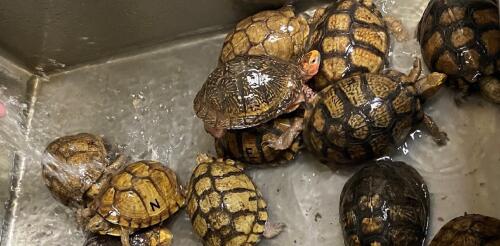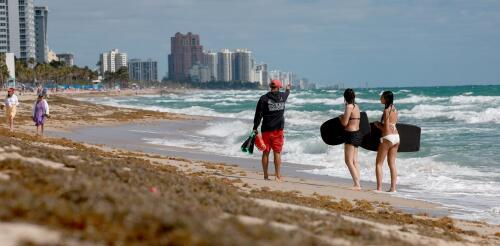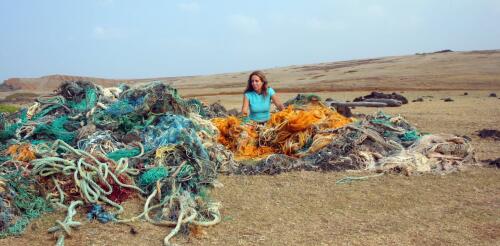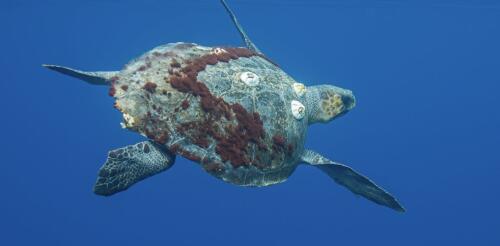Sea Turtles
Hatchling turtles are cute, small and inexpensive. Handled improperly, they also can make you sick. Turtles are well-known carriers of salmonella, a common bacterial disease that causes fever, stomach cramps and dehydration and can lead to severe illness, especially in young children and elderly people. In August 2023, the Centers for Disease Control and Prevention released an advisory about an 11-state outbreak of salmonella bacteria linked to pet turtles. “Don’t kiss or snuggle your turtle, and don’t eat or drink around it. This can spread Salmonella germs to your mouth and make you sick,” the agency warned. Global trade in turtles is big business, and the U.S. is a leading source, destination and transit country. Some of this commerce is legal, some is not. For example, it has been illegal in the U.S. since 1975 to sell turtles with shells less than 4 inches (10 centimeters) in diameter because young children often contract salmonella from them. But...
An unwelcome visitor is headed for Florida and the Caribbean: huge floating mats of sargassum, or free-floating brown seaweed. Nearly every year since 2011, sargassum has inundated Caribbean, Gulf of Mexico and Florida coastlines in warm months, peaking in June and July. This brown tide rots on the beach, driving away tourists, harming local fishing industries and requiring costly cleanups. According to scientists who monitor the formation of sargassum in the Atlantic Ocean, 2023 could produce the largest bloom ever recorded. That’s bad news for destinations like Miami and Fort Lauderdale that will struggle to clean their shorelines. In 2022, Miami-Dade County spent US$6 million to clear sargassum from just four popular beaches. Satellite image of sargassum concentrations in the Atlantic during the month of March. USF/NOAA, CC BY-ND Sargassum isn’t new on South Florida beaches, but its r...
I am obsessed with plastic objects. I harvest them from the ocean for the stories they hold and to mitigate their ability to harm. Each object has the potential to be a message from the sea – a poem, a cipher, a metaphor, a warning. My work collecting and photographing ocean plastic and turning it into art began with an epiphany in 2005, on a far-flung beach at the southern tip of the Big Island of Hawaii. At the edge of a black lava beach pounded by surf, I encountered multitudes upon multitudes of plastic objects that the angry ocean was vomiting onto the rocky shore. I could see that somehow, impossibly, humans had permeated the ocean with plastic waste. Its alien presence was so enormous that it had reached this most isolated point of land in the immense Pacific Ocean. I felt I was witness to an unspeakable crime against nature, and needed to document it and bring back evidence. I began cleaning the beach, hauling away weathered and misshapen plastic debris ̵...
Maine lobster fishermen received a Christmas gift from Congress at the end of 2022: A six-year delay on new federal regulations designed to protect critically endangered North Atlantic right whales. The rules would have required lobstermen to create new seasonal nonfishing zones and further reduce their use of vertical ropes to retrieve lobster traps from the seafloor. Entanglement in fishing gear and collisions with many types of ships are the leading causes of right whale deaths. Maine’s congressional delegation amended a federal spending bill to delay the new regulations until 2028 and called for more research on whale entanglements and ropeless fishing gear. Conservationists argue that the delay could drive North Atlantic right whales, which number about 340 today, to extinction. This is the latest chapter in an ongoing and sometimes fraught debate over fishing gear and bycatch – unintentionally caught species that fishermen don’t want and can’t se...
Many of the ocean’s most charismatic animals spend their lives swimming, flying or gliding thousands of miles, from the coasts to the high seas. Arctic terns, humpback whales and sea turtles are examples. Scientists have spent many years documenting and studying these magnificent journeys. Chronicling where these species go is just the beginning. The next steps are understanding when and how far each animal travels and what triggers it to roam. We are a marine biologist and an evolutionary ecologist and have worked together to study the nesting and migration habits of endangered olive ridley sea turtles (Lepidochelys olivacea). This information is vital for managing the turtles’ recovery – but our research shows that two identical-looking olive ridleys may follow very different paths. Approximate range of olive ridley sea turtles. NOAA Protecting animals that move Mapping the s...




